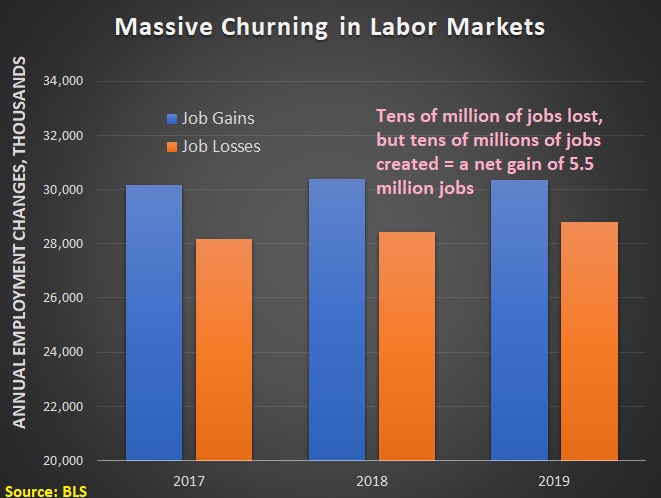I’ve previously explained that “creative destruction” is the best and worst part of capitalism. This new video has more details.
I have three goals with this video.
First, I explain that trade destroys jobs. But protectionists won’t be happy with my message because I point out that all trade destroys jobs – whether we are looking at trade inside a country or trade that crosses national borders.
To be more specific, jobs are destroyed because of changes in trade that are caused by innovation. And I cite several examples.
- The invention and adoption of the light bulb destroying jobs in the candle-making industry.
- The invention and adoption of the automobile destroying jobs in the horse-and-buggy industry.
- The invention and adoption of the personal computer destroying jobs in the typewriter industry.
Second, I explain that this creative destruction boosts our living standards. Americans are far more prosperous today than we were 50 years ago or 100 years ago.
And I specifically point out in the video that this is true even for the descendants of candle makers, blacksmiths, and typewriter makers.
Third, I share data from the Bureau of Labor Statistics about massive annual job losses in the private sector that occurred in 2017 and 2018, but I also pointed out that an ever larger amount of new jobs were created in those two years.
For today, I’m going to update those numbers by also showing what happened in 2019. As you can see from the chart, the United States lost more than 85 million jobs during those three years (the orange bars), but those losses were fortunately offset by a gain of nearly 91 million private-sector jobs (the blue bars).

There’s also data for 2020 and part of 2021, and those numbers tell an unhappy story because we still haven’t recovered from pandemic-related job losses (notwithstanding President Biden’s false claims in his State of the Union speech last night).
The moral of the story is that major job losses are an unavoidable feature of a modern economy. And that’s true regardless of the level of cross-border trade.
Which is why policymakers should focus on making sure we have sensible policies (low tax rates, efficient markets, spending restraint, open trade, etc) that allow high levels of new job creation in the United States.
P.S. Creative destruction also means that some companies disappear and are replaced by new ones.

